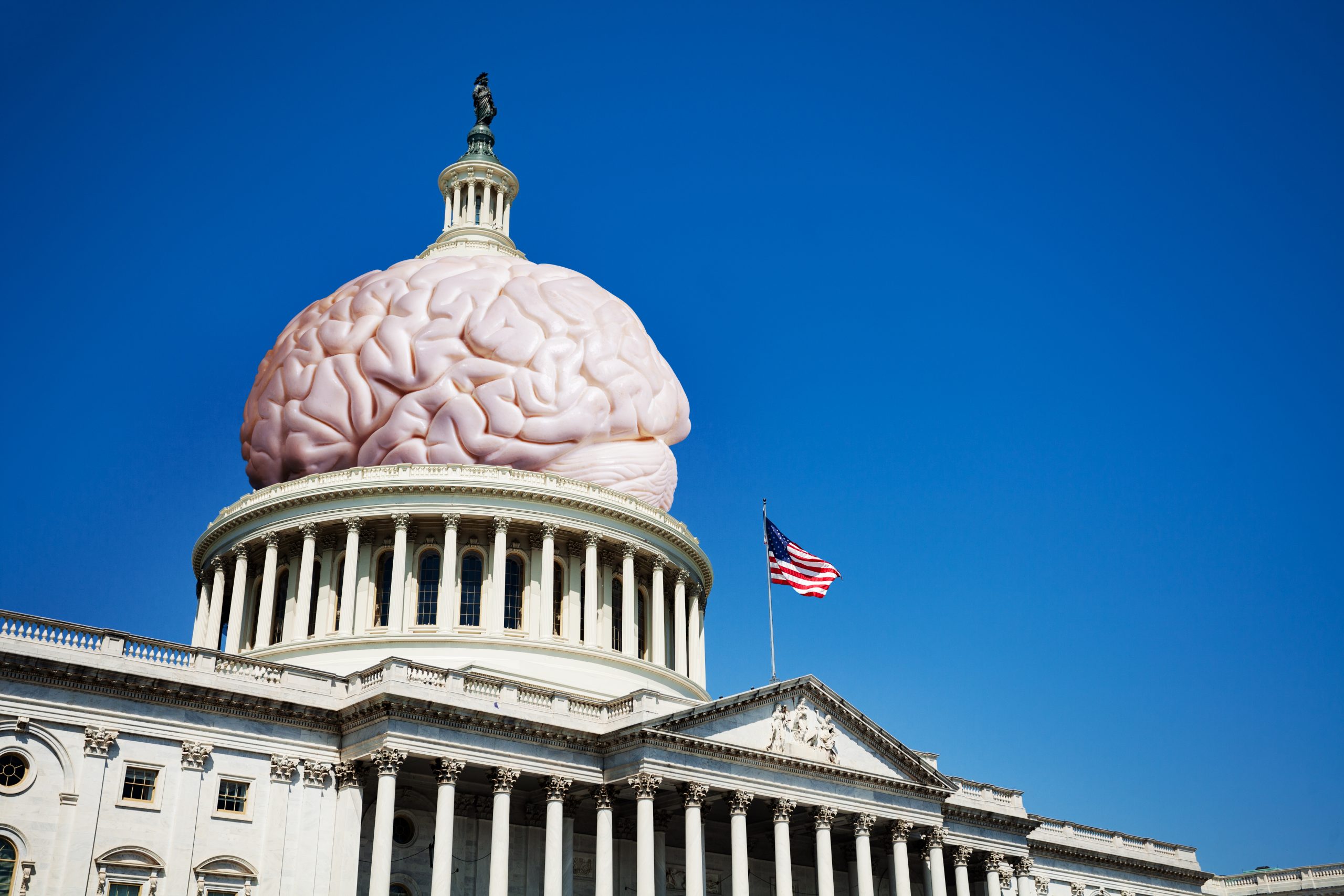Have you ever wondered why some people are die-hard conservatives while others are staunch liberals? Surprisingly, the answer might be hidden in the crevices of our brains. The captivating world of political neuroscience is a field that combines insights from psychology, neuroscience, and political science to understand how brain mechanisms reinforce certain political beliefs and behaviors. By examining brain structures and their functions, researchers aim to uncover the biological markers of political ideologies.
The Amygdala: The Brain’s Alarm System
Imagine your brain as a complex, bustling city. In this city, the amygdala functions like an alarm system, constantly on the lookout for threats. The human amygdala, an almond-shaped structure that rests deep inside our brain’s limbic system, which is the center of emotions and is heavily involved in processing negative emotions, particularly fear, threat and anxiety.
Recent work from researchers at the Hot Politics Lab including more than 900 participants from the Amsterdam Open MRI Collection dataset, has replicated earlier findings that political orientation correlates with gray matter in the amygdala.
Gray matter contains many kinds of different neurons and other cell bodies, practically responsible for processing signals related to uncertainty, fear, threat and emotions. This suggests that individuals with who identify more with traditional attitudes on social issues have a slightly larger amygdala, possibly explaining why conservative political parties tend to focus more on issues about national security/defense and public safety.
This new study is particularly significant because it replicates previous findings, this time using data from the Netherlands, a political multi-party democracy, more similar to Greece. This helps to validate the amygdala-conservatism link in multidimensional political landscapes such as the ones we see in continental Europe, suggesting that the findings are not confined to a specific cultural or political environment.
The Fusiform Gyri: The Face of Politics
Extending prior work, the researchers also found positive associations between conservatism and the left and right fusiform gyri, regions of the brain involved in facial recognition and perception of facial expressions. This unexpected finding deserves more research, as it suggests that the way our brain understands social information might also explain differences in our political beliefs.
The Bigger Picture
Investigating the brain’s role in political ideology helps us understand in what way or why people hold different socioeconomic and political beliefs. This knowledge has profound implications for how we interact with others, especially in a politically polarized world. It also raises important questions about the fairness of political persuasion tactics. If certain individuals are biologically predisposed to particular political beliefs, how ethical is it to try to sway them? In a democratic society, where informed debate and consensus are crucial, understanding these biological influences can help us find better ways to communicate across ideological divides.
While these findings are fascinating, they also simplify the complexity of the human brain and behavior. Political neuroscience is still a young field, and much more research is needed to fully understand which brain structures influence our political beliefs and how biological and environmental factors come into play when examining political ideology.
So next time you’re in a heated political debate – because politics is always hot! – remember that there’s more at play than just facts and opinion. Our brains, with their unique structures and functions, provide a frame for how we see the world and form political beliefs. Understanding these neural influences can help foster empathy, open-mindedness and a deeper understanding of ourselves and each other, essential ingredients for a healthy democracy.
* Dr. Petropoulos Petalas is assistant professor of Psychology, at the American College of Greece and the leading author of the study Is Political Ideology Correlated with Brain Structure? A Preregistered Replication, which was published on September 19, 2024 in iScience.



